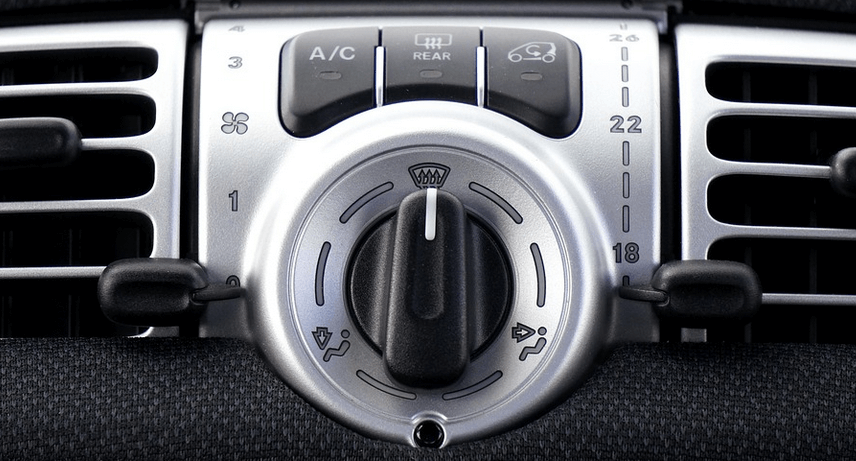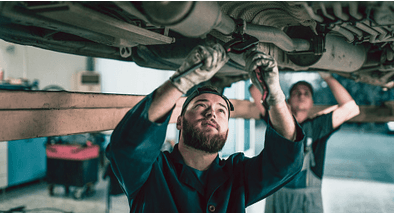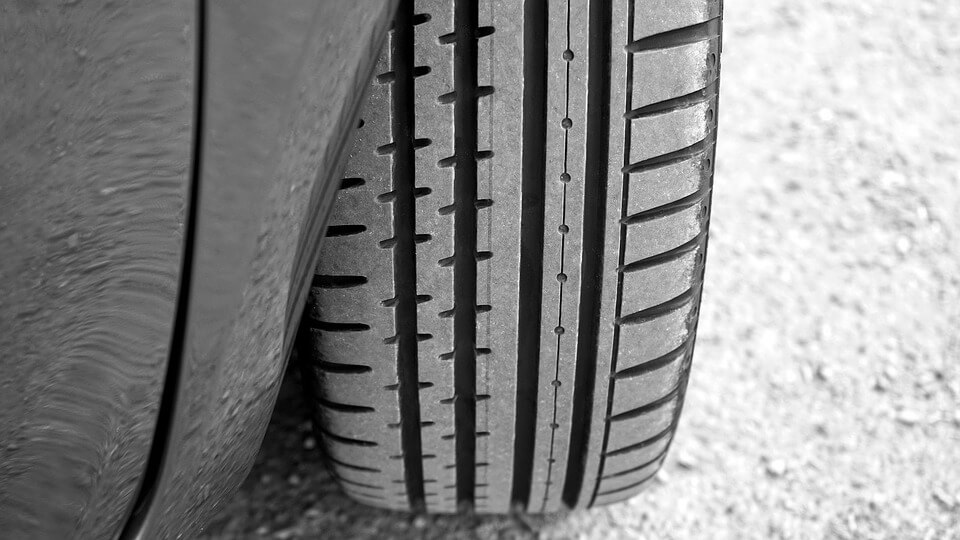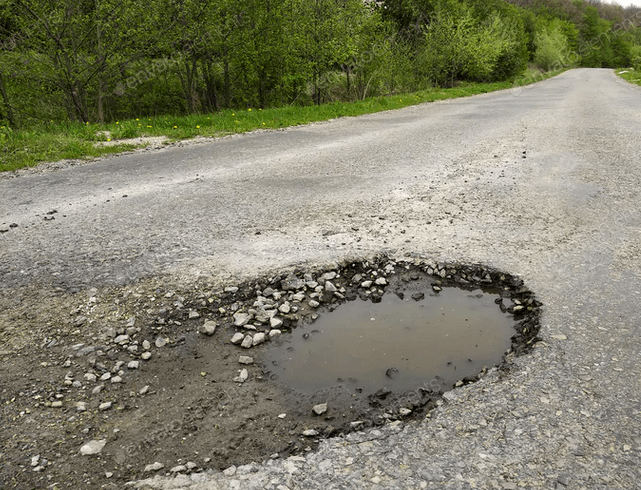Signs the Air Conditioner is Starting to Fail in your Car
 Is your car’s air conditioner not performing up to par? Recognizing the signs of a failing or bad air conditioner is crucial for a comfortable and enjoyable driving experience. Here are some common indicators that your car’s air conditioner may be in need of attention.
Is your car’s air conditioner not performing up to par? Recognizing the signs of a failing or bad air conditioner is crucial for a comfortable and enjoyable driving experience. Here are some common indicators that your car’s air conditioner may be in need of attention.
Weak or inadequate cooling is a clear sign that something is amiss. If you notice that the air blowing out of the vents is not as cold or powerful as it used to be, it could indicate a problem with your car’s air conditioning system. Low refrigerant levels, a malfunctioning compressor, or a clogged condenser are some potential causes. Addressing these issues promptly can restore the system’s cooling performance and keep you comfortable on the road.
Strand Noises from the Air Conditioner
Strange noises coming from the air conditioning system should not be ignored. Rattling, squealing, or grinding sounds could indicate a problem with the system’s components. It could be a loose belt, a failing compressor, or worn-out parts. These noises not only disrupt your driving experience but also serve as warning signs that the air conditioner requires attention. Having a professional technician inspect and diagnose the issue is essential to prevent further damage and potential breakdowns.
Foul odors emanating from the air vents are a cause for concern. If you notice persistent unpleasant smells when the air conditioner is running, it could indicate mold or mildew growth within the system. Moisture buildup in the evaporator coils is a common cause of this issue. Ignoring it can lead to poor air quality and potential health hazards. Having the system cleaned and treated by a professional can eliminate the odors and ensure fresh and clean air in your car.
Be Aware of any Signs of a Problem
If you experience any of these signs, it is recommended to have your car’s air conditioner inspected and repaired by a qualified technician. They have the expertise and equipment to diagnose and address the underlying problems. Timely maintenance and repairs will not only improve the performance of your car’s air conditioning system but also extend its lifespan, keeping you cool and comfortable on your drives.
Car Exhaust System and Proper Maintenance of it
 The car exhaust system may not be the most glamorous or attention-grabbing part of a vehicle, but its importance cannot be understated. The exhaust system plays a crucial role in the overall performance, efficiency, and environmental impact of a car.
The car exhaust system may not be the most glamorous or attention-grabbing part of a vehicle, but its importance cannot be understated. The exhaust system plays a crucial role in the overall performance, efficiency, and environmental impact of a car.
One of the primary functions of the car exhaust system is to safely and effectively remove the toxic gases produced during the combustion process. As the engine burns fuel, it generates harmful gases such as carbon monoxide, nitrogen oxides, and hydrocarbons. If not properly contained and expelled, these gases can pose serious health risks to both the passengers inside the vehicle and the environment. The exhaust system ensures that these gases are safely transported away from the engine and expelled through the tailpipe, reducing their impact on human health and air quality.
Check the Exhaust to help Reduce Engine Noise
In addition to removing harmful gases, the exhaust system helps to minimize engine noise. The system is equipped with components like mufflers and resonators that are specifically designed to reduce and control the noise produced by the engine. Without these components, the engine noise would be excessively loud and disruptive, creating a less comfortable driving experience for the occupants and potentially violating noise regulations in certain areas.
Improving the Performance of the Car
Furthermore, the car exhaust system plays a role in improving the overall performance of the engine. It helps to maintain the proper backpressure in the exhaust system, which is crucial for optimal engine operation. Correct backpressure ensures efficient airflow and allows the engine to perform at its best, enhancing power output and fuel efficiency. A malfunctioning or poorly designed exhaust system can disrupt the backpressure balance, leading to reduced engine performance, decreased fuel economy, and even potential damage to the engine.
Lastly, the exhaust system contributes to reducing harmful emissions and protecting the environment. Modern exhaust systems are equipped with catalytic converters, which help to convert harmful pollutants into less harmful substances through chemical reactions. This helps to minimize the release of pollutants into the atmosphere, contributing to cleaner air and a healthier environment.
A car exhaust system serves several important functions that are vital for the overall performance, efficiency, and environmental impact of a vehicle. Regular maintenance and prompt repairs are essential to ensure that the exhaust system functions optimally, minimizing harmful emissions, reducing engine noise, and maximizing engine performance and fuel efficiency. By recognizing the importance of a well-maintained exhaust system, we can contribute to cleaner air, a more enjoyable driving experience, and a healthier environment for all.
Windshield wipers and How to Inspect them for an Issue
 Your vehicle’s windshield wipers are an essential safety feature, ensuring clear visibility during rain, snow, and other adverse weather conditions. However, over time, these wipers can wear out and begin to fail, compromising their ability to keep your windshield clear. Recognizing the signs of failing windshield wipers is crucial to maintaining your safety on the road.
Your vehicle’s windshield wipers are an essential safety feature, ensuring clear visibility during rain, snow, and other adverse weather conditions. However, over time, these wipers can wear out and begin to fail, compromising their ability to keep your windshield clear. Recognizing the signs of failing windshield wipers is crucial to maintaining your safety on the road.
One of the most obvious signs of failing wipers is streaking. If you notice that your wipers leave streaks or smears on the windshield when in use, it’s a clear indication that the blades are worn or damaged. Streaking can obstruct your view and make it difficult to see the road ahead, particularly during heavy rain or at night.
Another sign of failing windshield wipers is skipping or bouncing. When the wiper blades start to skip or bounce across the windshield instead of gliding smoothly, it’s a sign that they have become warped or worn out. This irregular motion can result in uneven clearing and leave parts of the windshield untouched.
Worn out Windshield Wipers
Worn-out wiper blades may also produce scraping or chattering noises. If you hear unusual sounds coming from your wipers during operation, it suggests that the rubber on the blades has deteriorated or hardened. The friction caused by damaged blades can create these noises and hinder their effectiveness in clearing the windshield.
Reduced flexibility in the wiper blades is another sign of failure. Over time, exposure to sunlight and harsh weather conditions can cause the rubber to deteriorate, making the blades less flexible. As a result, the blades may no longer conform to the shape of the windshield, leaving streaks or patches of water behind.
If your wipers struggle to make proper contact with the windshield, lifting away or not maintaining consistent pressure, it’s a clear indication of worn-out wiper arms or springs. This can lead to ineffective cleaning and reduced visibility, especially in the corners or edges of the windshield.
In conclusion, recognizing the signs of failing windshield wipers is essential for your safety on the road. If you notice streaking, skipping, scraping noises, reduced flexibility, or poor contact with the windshield, it’s time to replace your wiper blades. Regular inspection and maintenance of your wipers will help ensure clear visibility and keep you safe during inclement weather conditions.
Tire Inspections and what to Look For
 Tire inspections are a crucial aspect of maintaining vehicle safety and prolonging tire life. Regular inspections can identify potential issues early on, preventing more significant problems and reducing the risk of accidents. Here are some key things to consider when conducting tire inspections:
Tire inspections are a crucial aspect of maintaining vehicle safety and prolonging tire life. Regular inspections can identify potential issues early on, preventing more significant problems and reducing the risk of accidents. Here are some key things to consider when conducting tire inspections:
- Tread Depth: The tread is the part of the tire that comes into contact with the road surface. Over time, the tread wears down, reducing traction and increasing the risk of hydroplaning in wet conditions. A tire’s tread depth should be checked regularly, and if it falls below the recommended level, the tire should be replaced.
- Signs of Wear: Inspect the tire’s surface for signs of uneven wear, such as cupping, feathering, or scalloping. These can indicate alignment issues or other problems that need to be addressed.
Other things to do for a Tire Inspection
- Sidewall Damage: The sidewall of a tire is essential for maintaining its structural integrity. Look for cuts, punctures, or bulges that could compromise the tire’s safety. If any damage is found, the tire should be replaced immediately.
- Proper Inflation: Proper tire inflation is essential for both safety and performance. Underinflated tires can overheat, causing blowouts, while overinflated tires can reduce traction and handling. Check the tire’s pressure regularly and adjust as needed.
Know the Age of the Tires
Tires have a finite lifespan, even if they appear to be in good condition. As tires age, they can become brittle and more prone to failure. Most manufacturers recommend replacing tires every six years, regardless of their condition. If you notice any issues, always make sure to contact us.
Tire inspections are essential for vehicle safety and prolonging tire life. Regular inspections can identify potential issues early on, preventing more significant problems and reducing the risk of accidents. Remember to check tread depth, signs of wear, sidewall damage, proper inflation, and the age of the tires. If you’re unsure about any aspect of tire inspection, consult a professional mechanic or tire specialist.
Shocks and How to Keep the Suspension System in the Best Condition
 The shocks of your car play an important role in the suspension system. They work to absorb the impact of bumps and potholes on the road, providing a smooth and comfortable ride. However, like any other component of your car, they can wear out over time, leading to a variety of problems. Here are some ways to tell if they are bad in your car:
The shocks of your car play an important role in the suspension system. They work to absorb the impact of bumps and potholes on the road, providing a smooth and comfortable ride. However, like any other component of your car, they can wear out over time, leading to a variety of problems. Here are some ways to tell if they are bad in your car:
- Poor Handling and Control One of the primary functions of shocks is to keep your car stable while driving. If your they are worn out, you may notice that your car feels unstable and difficult to control. You may feel like your car is swaying or leaning excessively when turning or changing lanes. This can be a dangerous situation, especially at higher speeds.
- Vibrations or Shaking If you notice that your car is vibrating or shaking excessively, it could be a sign that your shocks are bad. This can happen when the shocks are no longer able to absorb the impact of bumps and rough roads, causing the car to shake or vibrate. This can make for an uncomfortable ride, and it can also cause damage to other components of your car.
- Uneven Tire Wear Worn-out shocks can cause your tires to wear unevenly. If you notice that the tread on your tires is wearing down faster on one side than the other, it could be a sign that they are bad. This can lead to a variety of other problems, including reduced fuel efficiency and decreased traction on the road.
- Leaking Fluids Your shocks rely on a special hydraulic fluid to function properly. If you notice fluid leaking from your shocks, it’s a clear sign that they need to be replaced. The fluid is essential for shock absorbers to work correctly, and a leak means they are no longer doing their job effectively.
- Noises While Driving Worn-out shocks can also cause a variety of noises while driving. You may hear a clunking or rattling sound when going over bumps, or a squeaking sound when turning or going around corners. These noises can be a sign that your shocks are bad and need to be replaced.
Remember to check all the parts of the suspension system. It is essential to keep them in good condition. If you notice any of the signs mentioned above, it’s time to have your shocks inspected and replaced if necessary. Don’t ignore these signs, as worn-out shocks can compromise your safety while driving. Keep your car running smoothly and safely by keeping your shocks in good working condition.
Spring Maintenance to Keep your Vehicle working like New!
 Spring maintenance is essential for keeping your vehicle in the best condition possible. The cold and snowy conditions of winter can take a toll on your vehicle, causing wear and tear on various components. Here are some important car maintenance tasks to perform after winter to keep your car running smoothly and safely. As always, if you notice anything out of the norm with your car, make sure to contact us. Having it fixed as soon as possible is important.
Spring maintenance is essential for keeping your vehicle in the best condition possible. The cold and snowy conditions of winter can take a toll on your vehicle, causing wear and tear on various components. Here are some important car maintenance tasks to perform after winter to keep your car running smoothly and safely. As always, if you notice anything out of the norm with your car, make sure to contact us. Having it fixed as soon as possible is important.
Spring Maintenance Inspections
Firstly, check your fluids. Cold temperatures can cause fluids such as oil, transmission fluid, and brake fluid to thicken and lose effectiveness. Check your vehicle’s owner’s manual to see the recommended levels for each fluid and top up if necessary. If any of the fluids look particularly dirty or contaminated, it may be time for a flush and refill. Also, inspect your windshield and mirrors. Winter weather can cause chips, cracks, or other damage to your windshield, which can impair your visibility. Check your windshield and mirrors for any damage and replace them if necessary. Also, check your wiper blades for any issues. Replace them if they are worn or damaged.
Brake & Tire Checks
Check your brakes. Winter driving conditions can cause extra wear on your brakes, which can lead to reduced stopping power. Have a mechanic check your brake pads, rotors, and calipers to ensure they are functioning properly. If your brakes are worn or damaged, it’s essential to have them repaired or replaced as soon as possible. Remember to inspect your tires. Winter conditions can cause your tires to lose pressure, and potholes and other road hazards can cause damage to your tires. Check the pressure of each tire and ensure they are inflated to the recommended level. Also, inspect each tire for any visible damage or wear. If you notice any significant damage or wear, it may be time to replace them.
Regular car maintenance after winter can help extend the life of your vehicle and prevent costly repairs down the line. By performing these essential car maintenance tasks after winter, you can help ensure that your car is running smoothly and safely throughout the rest of the year. Don’t neglect your car’s maintenance needs and schedule a visit to your mechanic to get everything checked and fixed if needed.
Alignment after Hitting a Pothole when Driving
 Check the alignment on your vehicle if you accidentally hit a pothole. One of the most common damages caused by hitting a pothole is tire damage. A pothole can cause a blowout or a flat tire, which can be dangerous if you’re driving at high speeds. In addition to tire damage, hitting a pothole can also cause damage to your suspension system. This can result in misaligned wheels, which can cause uneven tire wear, decreased fuel efficiency, and difficulty steering.
Check the alignment on your vehicle if you accidentally hit a pothole. One of the most common damages caused by hitting a pothole is tire damage. A pothole can cause a blowout or a flat tire, which can be dangerous if you’re driving at high speeds. In addition to tire damage, hitting a pothole can also cause damage to your suspension system. This can result in misaligned wheels, which can cause uneven tire wear, decreased fuel efficiency, and difficulty steering.
Damage to the Alignment
Furthermore, hitting a pothole can also damage your vehicle’s alignment. The alignment of your car is crucial for safe handling and stability. Misaligned wheels can cause your car to pull to one side or vibrate at high speeds, making it difficult to control your vehicle. This can be especially dangerous when driving on highways or in heavy traffic.
In addition to the damages to your car, hitting a pothole can also be dangerous for you and other drivers on the road. When you hit a pothole, you may lose control of your car or swerve into other lanes of traffic. This can cause accidents, injuries, and even fatalities.
To avoid the damages caused by hitting a pothole, it’s important to practice safe driving habits. This includes driving at a safe speed and keeping a safe distance from other vehicles on the road. You should also be vigilant when driving on roads that are known to have potholes and avoid them if possible.
In conclusion, hitting a pothole can cause significant damages to your vehicle, including tire damage, suspension damage, and alignment issues. It can also be dangerous for you and other drivers on the road. By practicing safe driving habits and avoiding potholes when possible, you can help to prevent these damages and keep yourself and others safe on the road.
Winter Driving and Staying Safe to your Destination
 Driving in winter weather can be challenging and potentially dangerous, but there are several steps you can take to stay safe on the road. Here are some tips to stay safe this winter.
Driving in winter weather can be challenging and potentially dangerous, but there are several steps you can take to stay safe on the road. Here are some tips to stay safe this winter.
Slow down: Snow, ice, and slush on the road can reduce traction and make it harder to control your vehicle. Reduce your speed to give yourself more time to react to any unexpected hazards.
Increase following distance: It takes longer to stop on slippery roads, so leave more space between your vehicle and the one in front of you.
Use winter tires: Winter tires are designed to provide better traction in cold, snowy, and icy conditions. Make sure your tires are properly inflated and have adequate tread depth.
Clear all snow and ice from your vehicle: Make sure your windshield, windows, mirrors, and lights are clear of snow and ice before driving. This will ensure good visibility and prevent snow and ice from flying off your vehicle and hitting other cars.
Winter Driving Visibility
Use your headlights: Turn on your headlights to increase your visibility and help other drivers see you.
Avoid sudden movements: Sudden movements such as hard braking or sharp turns can cause your vehicle to lose traction and skid. Drive smoothly and avoid sudden movements.
Stay alert: Winter driving conditions can be unpredictable. Stay focused on the road, avoid distractions, and be prepared to react to any unexpected hazards.
Carry a winter emergency kit: In case of an emergency, carry a winter emergency kit in your vehicle that includes items such as a blanket, a flashlight, a shovel, and a first-aid kit.
Remember, driving in winter weather requires extra caution and attention. Plan ahead, stay focused, and drive safely. If you ever notice an issue with your vehicle, always make sure to contact us. That way we can inspect it to ensure it is working properly.
What is a Wheel Alignment
 Wheel alignment is the process of adjusting the angles of the wheels to the manufacturer’s specifications. Proper wheel alignment is important for several reasons. It can help to ensure that your vehicle handles efficiently while on the road. If you notice any issues when you are driving, make sure sure to contact us. By scheduling an appointment, we can inspect your vehicle and what may be causing the issue.
Wheel alignment is the process of adjusting the angles of the wheels to the manufacturer’s specifications. Proper wheel alignment is important for several reasons. It can help to ensure that your vehicle handles efficiently while on the road. If you notice any issues when you are driving, make sure sure to contact us. By scheduling an appointment, we can inspect your vehicle and what may be causing the issue.
- Increased tire life: Improper wheel alignment can cause uneven tire wear, which can shorten the life of your tires. When your wheels are properly aligned, your tires will wear evenly, which can help them last longer.
- Improved fuel efficiency: When your wheels are properly aligned, your vehicle will have less resistance to the road, which can improve fuel efficiency.
- Enhanced vehicle handling and safety: Proper tire alignment can improve your vehicle’s handling and stability, making it easier to control and reducing the risk of accidents.
- Reduced suspension and steering damage: Misaligned wheels can put extra stress on your vehicle’s suspension and steering components, causing premature wear and damage. Proper wheel alignment can help reduce this stress, prolonging the life of these parts.
- Increased driving comfort: Proper wheel alignment can also improve your driving comfort by reducing vibrations and steering pull.
Wheel Alignment Maintenance
Overall, regular wheel alignments can help you save money on tire replacement, fuel costs, and vehicle repairs, while also improving your driving experience and safety. Make sure to bring the vehicle in for regular maintenance. If you are not sure how often this should be, always make sure to contact us. We can inspect the tires and how they are aligned. If they are not aligned properly, the tires will wear out sooner than they otherwise will need to. This can help you save time, money, and stress in the long run.
Tires and Signs of Trouble
 Tires play an important role in your car and can often be the lifeblood of your vehicle. If you don’t have good tires, your car will struggle to move as efficiently as it should. In this article, we’ll take a look at what to look for when checking tire pressure, how to fix a flat tire, and more.
Tires play an important role in your car and can often be the lifeblood of your vehicle. If you don’t have good tires, your car will struggle to move as efficiently as it should. In this article, we’ll take a look at what to look for when checking tire pressure, how to fix a flat tire, and more.
Tires come in a variety of sizes and styles. To choose the right tire for your vehicle, you need to assess the size, type, and make of your vehicle. Additionally, be sure to check the tire’s inflation pressure to ensure it will fit properly on your vehicle. If you are not sure what the correct air pressure should be, make sure to read the vehicle owner’s manual. You can also look inside the car door jamb for the correct amount. If you still cannot find what the correct amount should be, make sure to contact us. We can advise and recommend what the air pressure should be.
Tires and Noticing Issues
When checking a tire for quality, look for:
-An air pressure reading that is within specification
-No leaks
-The surface of the tire that is clean and dry
-A deep tread
Anytime the car is in less than ideal condition, make sure to bring the vehicle in. We can check the tires to ensure they are in the best condition they should be. The tread should wear evenly over the entire tire. You can check this easily by using just a penny. Place it upside down in the tread wear. If you can see the top of Lincoln’s head, then the tires should be replaced.
What to Do If You Have Tire Trouble
If there are any problems or issues with the tires, make sure to schedule an appointment. We can inspect the tires and advise you on what steps you should take to have the best condition possible. When the tires are in the ideal condition, your safety is improved as well.
Thank you for considering Brausen Repair Centers!
We look forward to earning your vehicle service and repair business.

![pirelli-logo[1]](/wp-content/uploads/2020/09/pirelli-logo1.png)
![Uniroyal_d326f_450x450[1]](/wp-content/uploads/2020/09/Uniroyal_d326f_450x4501.png)
![michelin-logo[1]](/wp-content/uploads/2020/09/michelin-logo1.png)
![logo-bfgoodrich[1]](/wp-content/uploads/2020/09/logo-bfgoodrich1.png)
![authorizedlogo_AMSOIL[1]](/wp-content/uploads/2020/09/authorizedlogo_AMSOIL1.png)
![valvoline[1]](/wp-content/uploads/2020/09/valvoline1.png)
![ase_certified_logo_index[1]](/wp-content/uploads/2020/09/ase_certified_logo_index1.png)